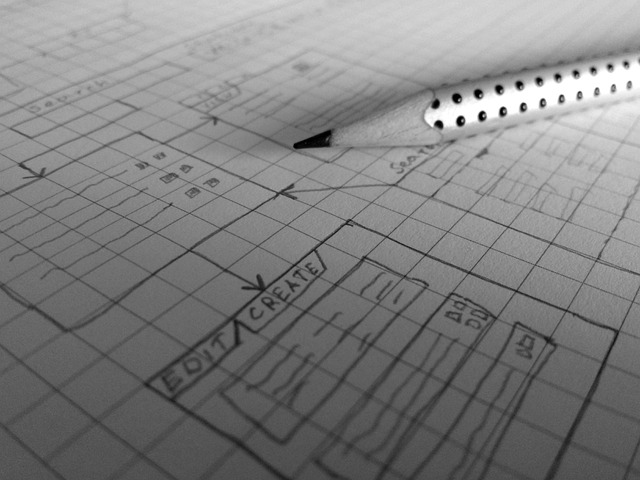Hey there, design enthusiasts! Ellen here, and today we’re diving into a topic that’s close to my heart and crucial for your success: visual hierarchy. But we’re not just talking about making things pretty (though that’s always a bonus). We’re going to explore how smart visual hierarchy can supercharge both user engagement and your SEO game. Buckle up, because this is where design meets digital strategy!
The Basics of Visual Hierarchy
First things first: what exactly is visual hierarchy? Simply put, it’s the art of arranging and designing elements on a page to guide the viewer’s attention to the most important bits first. It’s like being a traffic cop for eyeballs, directing them where to go and in what order.
But here’s the kicker – when done right, visual hierarchy isn’t just about aesthetics. It’s a powerful tool that can significantly boost user engagement and, believe it or not, your search engine rankings. Let’s break down how this works.
User Engagement: Making Your Site Sticky
- First Impressions Matter The moment a user lands on your page, visual hierarchy comes into play. A clear, well-structured layout helps users quickly understand what your page is about and where to find the information they need. This immediate clarity can significantly reduce bounce rates – a key factor in user engagement and, consequently, SEO.
- Guiding the User Journey By strategically using size, color, contrast, and spacing, you can create a visual path for users to follow. This isn’t just about looking good; it’s about making the user experience intuitive and effortless. The easier it is for users to navigate your site, the longer they’ll stick around.
- Emphasizing Call-to-Actions (CTAs) Want users to sign up for a newsletter, make a purchase, or contact you? Visual hierarchy is your best friend. By making your CTAs stand out through size, color, or position, you’re more likely to get those all-important clicks.
- Breaking Up Content Long blocks of text are the enemy of engagement. Use headers, subheaders, bullet points, and images to break up your content. This not only makes your page more visually appealing but also more scannable – a crucial factor in keeping today’s fast-paced users engaged.
SEO: Climbing the Search Engine Ladder
Now, you might be thinking, “Ellen, this all sounds great for users, but what about those Google bots?” Well, my friends, that’s where things get really interesting. Visual hierarchy isn’t just for human eyes – it plays a significant role in how search engines understand and rank your content.
- Header Tags: Your SEO Secret Weapon Using H1, H2, H3 tags isn’t just about changing font sizes. These tags tell search engines about the structure and importance of your content. A well-structured page with clear header hierarchy is more likely to be understood (and favored) by search engines.
- Above the Fold Content What users see first on your page (before scrolling) matters to search engines too. Placing important, relevant content “above the fold” signals its importance to both users and search algorithms.
- Image Alt Text and Captions While not strictly about hierarchy, the way you handle images affects both accessibility and SEO. Properly labeled images with relevant alt text and captions can improve your search rankings.
- Mobile Responsiveness With mobile-first indexing, how your visual hierarchy translates to smaller screens is crucial. A design that maintains clear hierarchy across devices is more likely to rank well.
- User Signals Remember those engagement metrics we talked about earlier? Lower bounce rates and longer time on page send positive signals to search engines about the quality of your content.
Putting It All Together: A Holistic Approach
The key to nailing both user engagement and SEO is to approach visual hierarchy holistically. It’s not about tricking search engines or overwhelming users with flashy design. It’s about creating a seamless, intuitive experience that naturally incorporates SEO best practices.
This is where collaborating with SEO experts can be incredibly valuable. While we designers focus on creating beautiful, user-friendly layouts, SEO professionals can provide insights into keyword placement, content structure, and technical optimizations. For instance, the team at this agency has been instrumental in helping many of my clients strike that perfect balance between design appeal and search engine favor.
Practical Tips for Enhancing Visual Hierarchy
- Use size and weight to establish importance. Larger, bolder elements naturally draw the eye first.
- Employ color and contrast strategically. Important elements should stand out from their surroundings.
- Leverage white space. Giving important elements room to breathe can make them more prominent.
- Consider F and Z patterns. Users often scan pages in these patterns, so arrange key elements accordingly.
- Use icons and images thoughtfully. Visual elements can guide users and break up text, improving scannability.
- Ensure consistency. Your hierarchy should remain consistent across your site for a cohesive user experience.
The Bottom Line
Visual hierarchy isn’t just about making things look good (though that’s certainly a perk). It’s a powerful tool that, when wielded correctly, can significantly boost both user engagement and your SEO efforts. By creating clear, intuitive layouts that guide users and search engines alike, you’re setting yourself up for digital success.
Remember, great design isn’t just about aesthetics – it’s about functionality, usability, and yes, even searchability. So the next time you’re working on a web project, think beyond just the visual appeal. Consider how your design choices can create a hierarchy that serves both your users and your search engine rankings.
Until next time, keep your designs hierarchical and your SEO game strong!







